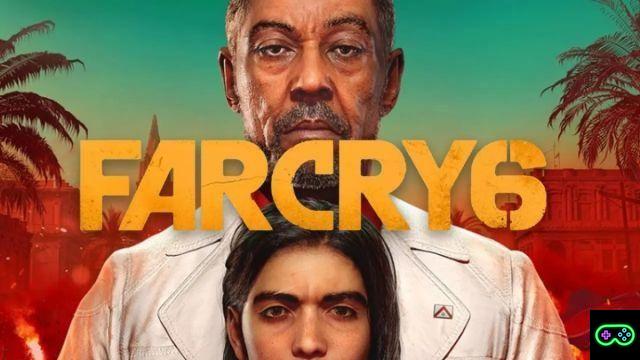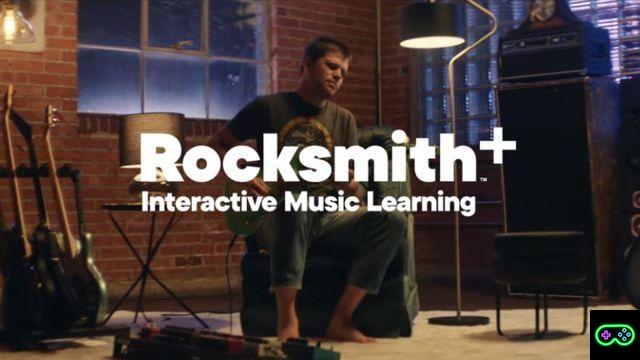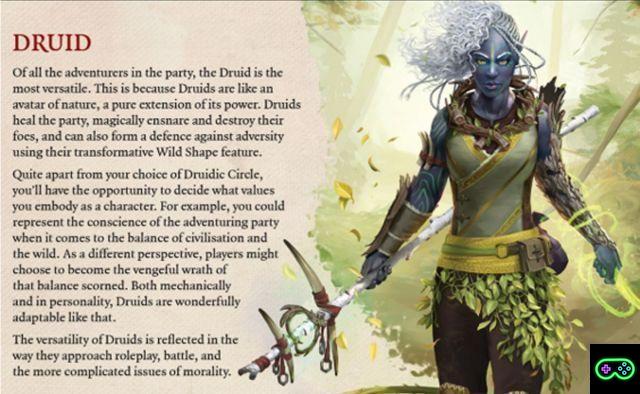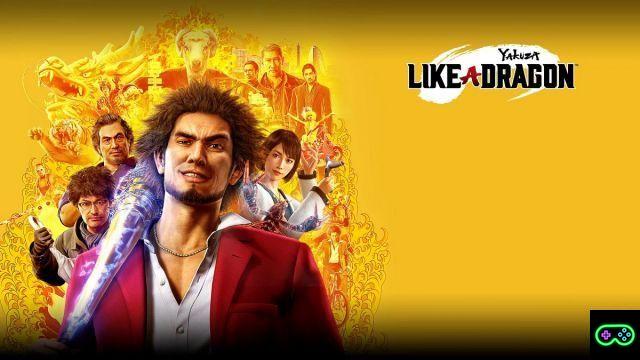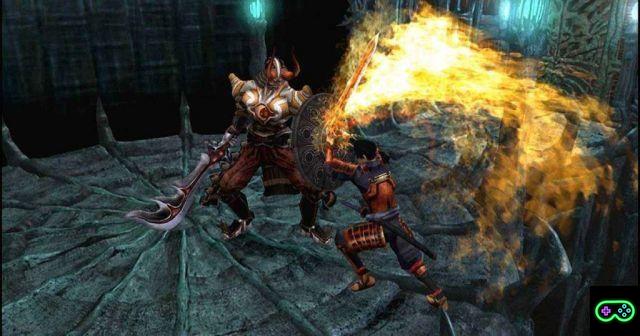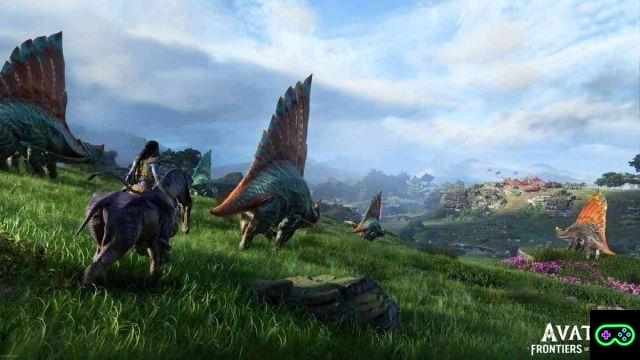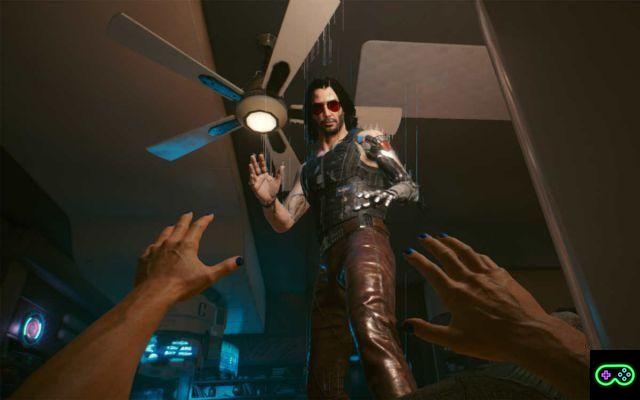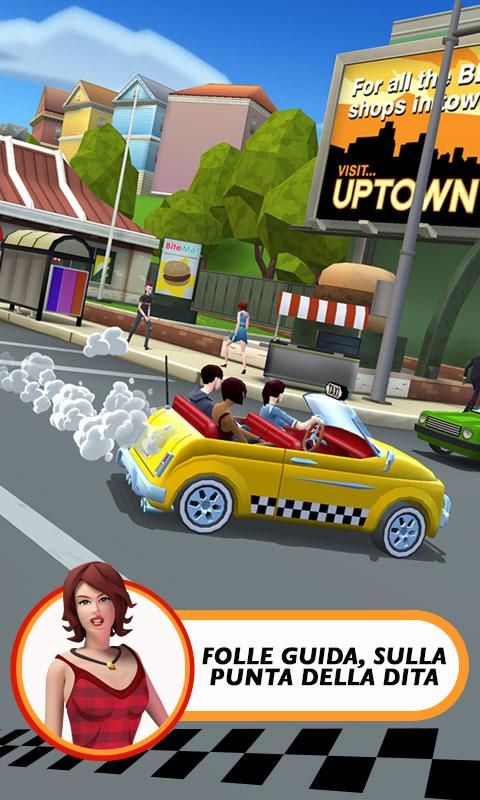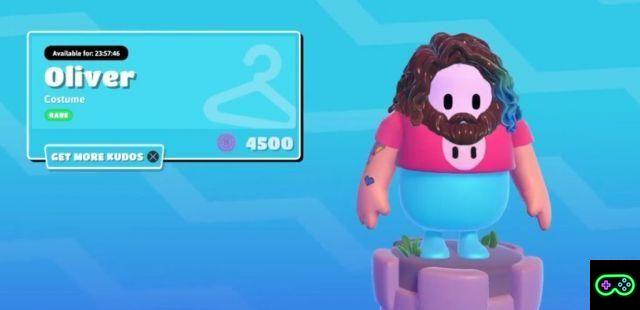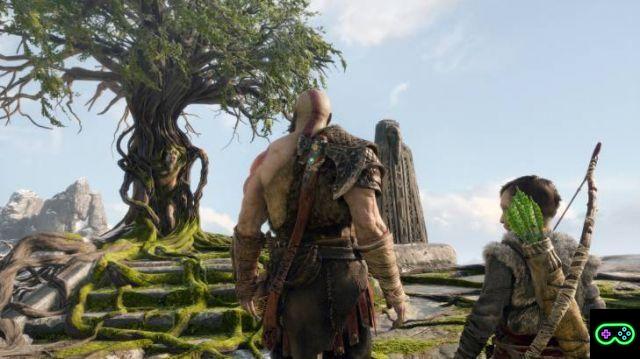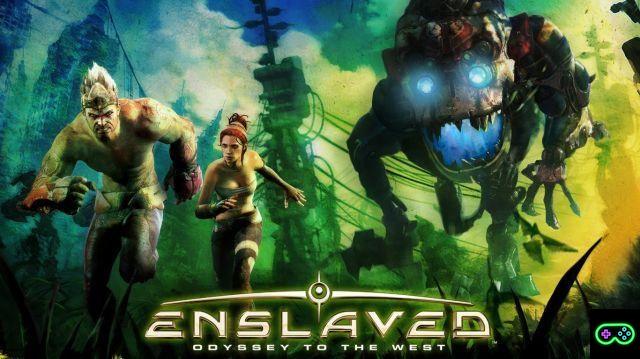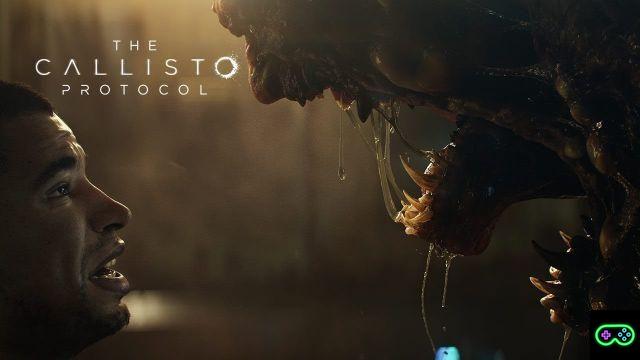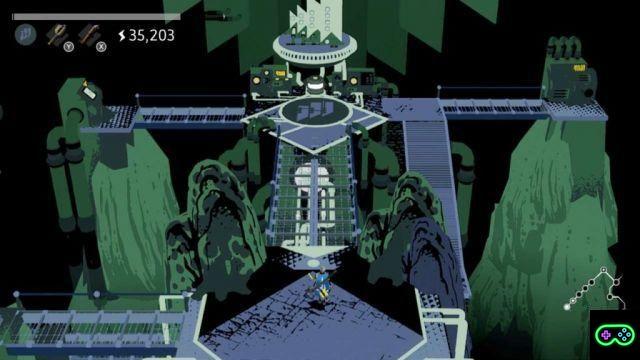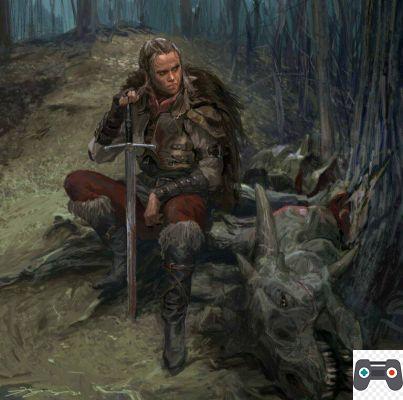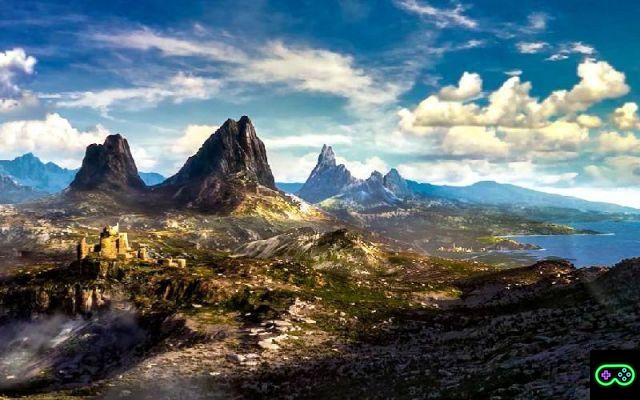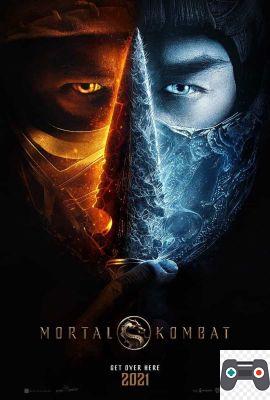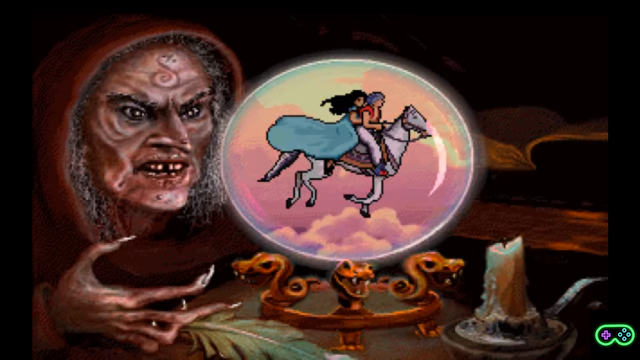Did I ever tell you what the definition of vaporware is, yeah? Vaporware is publishing and republishing the same shit of press releases, over and over again, hoping the game will finally see the light. This is vaporware!
Forgive me for the learned quote (?) But, as you well know, the line that divides videogames from vaporware is often so thin that even the most seasoned critics shake the wrists (and I certainly do not fall into the category). Think about it: Most of us have loved a game that, for one reason or another, got sucked into the jaws of that Sarlacc digitale indicated with this neologism with a strong sardonic charge. The Last Guardian, Cyberpunk 2077, Half-Life 3, Star Citizen, Deep Down, WiLD, Duke Nukem Forever: what do all these titles have in common? The fact of having been enveloped by a thick blanket of cyber fog, from which only a few have managed to get out, after years of "presumed death" and, often, in a form that is anything but dazzling.
Biomutant did not have a history not very different from that of the aforementioned works: in progress since 2015 (the year in which his development studio was founded), publicly announced in 2017 and, after a few years of "press blackout", published last May 25, 2021. The title in question is the first work of experiment 101, team created by former employees of Avalanche Studios who, in the very sultry Gamescom of 2017, had presented themselves with an important business card: an action RPG set in a post apocalyptic open world, whose gameplay included both hand-to-hand combat and with firearms.
Despite the excellent conditions, the long (and complex) gestation of the title did not have the outcome that we all would have hoped for. I want to be clear with you from the beginning: Biomutant offers several interesting ideas, but it is agaming experience far from perfect, with problems that manifest themselves from the first minutes. In the following lines, I will try to better explain what works and what, instead, has jammed.
Never ... never ... you will forget ...
Nostalgia (rogue) aside, don't think you've missed the mark so badly. In a future we do not know how far away, the world as we know it no longer exists: the wicked policies of Toxanol Corporation they unleashed real ecological cataclysms, concretizing Greta Thunberg's darkest nightmares. A toxic slime has polluted the waters, compromising the ecosystem and causing the extinction of almost all species, including humans. However, this biological apocalypse was not the end, but a new beginning!
In obeying the Darwinian theory, the surviving living beings were called upon to make a simple choice: evolution or death. This forced crossroads has profoundly shaped the planet, populating it with bizarre creatures and allowing nature to reclaim the space occupied by the concrete carcasses of the Mondochefu. And it is in one of these buildings that our adventure begins: immediately after creating the protagonist (with a editor definitely well stocked), we will find ourselves taking on the role of a creature with a mysterious past and on whose shoulders the greatest of labors rests.
Our "bipedal raccoon" will in fact be called to save the world from a new cataclysm. L'Tree of Life is on the verge of death: four entities known as Eater, they are literally gnawing at its roots and, if they succeed, this time it would really be the end of it all. As if all this were not enough, other creatures with intellect are in turmoil: the six tribe in which they are divided they are fighting each other, undecided whether it is more appropriate to save the Tree or let it die, hoping for the advent of a new era.
Needless to say, we will decide the fate of the world, exploring it far and wide, making choices that will "illuminate" it or "obscure its light", discovering its lore and, at the same time, trying to reconstruct our history personal, between flashbacks.
Narrative crossroads, lore and an (unbearable) narrator
Our adventure begins in a Mondochefu bunker and, immediately after exiting it, we are already faced with the first choice which, in fact, will directly influence the plot. As mentioned earlier, the tribes are undecided on how to deal with the threat of the World Eaters, and it is precisely on this point that we will have to take sides, taking the side of the Jagni (warrior tribe, inclined to let the Tree of Life die) or gods Myriads (Peaceful and valued tribe, determined to save the world). Depending on the path we take, the final goal will change, also depending on the karma of our character (on which we will return later).
Since there is nothing left of the human race but a vague memory, the post apocalyptic species speak of languages incomprehensible to us; an omnipresent one will come to our aid voiceover, who will play the role of narrator, describing anything or event that we will come across, whether it is a new biome, a narrative twist or even just a few hints of color.
Biomutant is a game experience that almost completely revolves around the plot; however, the narrative is not entirely convincing. The story unfolds in a rather fragmented way and, beyond a couple of twists, does not leave its mark on the viewer, perhaps also due to the way in which it is presented. The choice to entrust everything to an "external" narrator undoubtedly favors the ironic vein of which the game is steeped, but it does not help the user to identify with each other, often ending up boring him with the usual 4 or 5 sentences that will slavishly accompany our explorations. Trust me: as soon as you get the chance, you will almost certainly choose to minimize voiceover interventions.
If the discovery of the lore of Mondochefu is intriguing, the same cannot be said of that of the hero's past: the explanatory flashbacks almost all of them are concentrated at the beginning of the adventure, leaving however many questions unanswered. Add in some secondary NPCs as nice as they are not very thorough and you will have discovered one of the first limitations of the Experiment title 101.
Guns, sidearms, extreme crafting and… Wung-Fu!
Since its presentation, Biomutant promised a hybrid gameplay, based as much on firefights as on hand-to-hand combat, obviously without forgetting the role-playing elements and some healthy platforming phases. What was the final result? A little patience and you will find out.
The initial editor allows us to create our character quite thoroughly, making us determine his DNA, that is sex, species of belonging, class, elemental resistances, fur color and starting attributes. The latter will directly influence the physical features of the protagonist: an "abundant dose" of Intelligence, for example, will increase the size of the hero's head; if instead we prefer Agility, we will be able to count on longer legs.
As soon as we meet the first enemies, we will get acquainted with the combat system, cross and delight of this gaming experience. We will be able to choose to face our opponents in the way that we consider most suitable, by resorting to side arms, to Wung-Fu techniques or, finally, the dear, old guns. Whatever your choice, the customization possibilities will be endless: exploring the vast game map, we will find a practically infinite series of Fully customizable weapons and pieces of equipment. If none of the objects meet our needs, we can always decide to create new ones, using everything we have collected previously.
Through the crafting menu, we will be able to customize every weapon and armor in our possession, modifying them as needed and, in fact, guaranteeing considerable depth to the video game.
Now is the time to look at the other side of the coin.
A hybrid combat system
Let's say it clearly: combining hand-to-hand combat, white weapon and ranged combat is not in itself a simple undertaking; if we then wanted to insert these mechanics in an open world like Fallout, the realization difficulty would be even greater. I already hear your question: what was the result obtained by Biomutant?
The combat system set up by Experiment 101 immediately presents itself as chaotic, allowing us to pass smoothly from firearms to white ones, obviously without disdaining martial arts. In this respect, as we accumulate experience points, we will be able to unlock a whole series of combo (more or less spectacular) that will mix all these fighting styles.
At this point, I have to take on the role of the pooper: despite these good premises, know that almost everything will go through firearms. The guns and rifles, in fact, will represent the highest source of damage, also allowing us to keep our opponents at a distance; all this without considering that the bosses at the end of the level will have to be faced almost obligatorily in this way. That said, it is still possible to face a whole range of enemies using sidearms or Wung-Fu, but this is almost always the riskiest option, as hand-to-hand combat is the most rough and imprecise of the two, with saves and dodges with which we will not always be able to avoid the opponent's attacks. Still in this respect, little space is left to chase psionici which, however interesting and beautiful to look at, will almost always be relegated to secondary clashes.
Wanting to focus on guns and rifles, we underlined the enormous possibilities of customization, thanks to the many pieces that we will find around the game world, which will give an additional post apocalyptic touch to our arsenal. However, only a fraction of these will represent a real upgrade, with the consequence that, in no time, your inventory will be chock full of parts with little (or no) use. The writer, for example, faced the game (in "Normal" mode) by manufacturing only two rifles and a single white weapon, easily managing to overcome any threat.
Trying to summarize everything in a few words, the Biomutant combat system presents itself as a hybrid experience, which presents many possible variations on the theme, without really deepening any of them.
DNA, karma and fundamental choices (but not entirely)
As previously mentioned, Biomutant allows us to create a character in a very thorough way, letting us choose and modify practically every aspect of it. However, if at the beginning all these possibilities had captured me not a little, as the hours went by I realized how much all this constituted a purely aesthetic factor.
Let's start with the protagonist's editor. Belonging to one or another species, as well as the determination of physical appearance (caused by the distribution of initial experience points) and elemental resistances, will have a rather relative importance, and almost entirely limited to the first few hours of play. Let's go in order.
La species membership, as often happens in other RPGs, is reduced to being a simple skin applied to the character, without adding almost anything relevant to skills and perk. Moving on to the experience points, however, the initial distribution will have its own importance, but limited in time. If it is true that being able to count on greater Intelligence and / or Agility will be useful to us, it is equally true that, by using the right number of hours, we will be able to accumulate experience points useful to fill all the gaps of our character. Were you afraid that skimping on certain stats could jeopardize your adventure? Don't worry, you just need to level it up a little! So what was the point of choosing between a big head, long legs or a more squat abdomen? Basically, to determine the appearance of your furry protagonist and little else.
The foregoing also applies to the class and to elemental resistances. The latter, in other words, will allow us to access high-risk areas, where we would be able to resist a few moments. The areas in question (clearly visible on the game map) will become freely explorable when we find the relative insulating suits; however, once again, simply accumulating a few experience points (and certain collectibles) to easily reach more than 90% resistance to a single element, making the need for adequate equipment completely unnecessary.
The five classes available, although well diversified, present differences only in the early stages of the game; even in this case, in fact, you just need to accumulate a few hours of play and, at the price of a few skill points, you can easily acquire the skills typical of the other classes. You chose the Commando because, basically, you wanted to be gods Rambo in fur? Just play for a while and your gunslinger will also be able to show off some psychic powers that will make Gandalf the White envious. What has just been said if, on the one hand, it allows you to develop an almost unstoppable character (especially after 20 hours of play), on the other hand it sends the time spent creating the protagonist to be blessed, making the meaning of the protagonist lose.role-playing element.
Still on the subject of role-playing elements, also the choices and the karma they are almost exclusively of facade importance. In the first case, the decisions that will directly affect the plot and its epilogue are very few (two or three) and almost never truly irreversible; wanting to give an example, the same tribal alliance can be literally overturned later on. What has just been said is also applicable to the karmic system: in the course of our journey, we will be called to make choices, favoring the bright side of our consciousness or the dark one. Also in this case, appearances would suggest that a bad choice can more or less directly influence the continuation of the adventure, but that's not how things are.
Choosing to be good or bad will affect you chase psionici to which we will have access, but even here the choice will never be unchangeable. After reaching the maximum degree of light, for example, we can begin to cultivate our "dark side", thus also being able to unlock the magical powers of the shadow. Beyond a few different lines of dialogue with a few NPCs, karma doesn't really have any other function, and that's a real shame.
Game world and technical realization
As in any self-respecting open world, exploration plays a central role in Biomutant. The game world is indeed chock full of points of interest; be it ruined cities, dilapidated houses, Toxanol research centers, we will do well not to neglect any structure we will come across, both to get our hands on consumables and equipment and to find out what precisely happened to the Mondochefu and the its inhabitants. There will be secret areas to discover and tons of collectibles that can also enhance some of our attributes.
Some likened him to Zelda, some to Shadow of Mordor; actually Biomutant, in terms of feeling, is much closer to Jak and Daxter and the saga of Fallout than to the works mentioned above, with which, however, it shares the open world mechanics.
I seven biomes the game is made up of are very well made, capable of offering a good variety of environments and enemies to face. I cannot deny that the title has some decidedly remarkable glimpses, both in its valleys surrounded by greenery and in the ruined cities, whose buildings surrounded by climbing plants are a source of considerable déjà vu (someone said The Last of Us?). The speech changes considerably when we move to the closed spaces. Whether it's a bunker, an outpost to be conquered or even a simple house, the structure, the rooms and the very arrangement of furniture and objects are quite repetitive.
Still speaking of repetitiveness, it is impossible not to mention the secondary NPC dialogues who, as soon as they have finished their lines, will begin to repeat a sample of phrases practically identical to those of any other character. The most obvious case is represented by the prisoners you can save and by the bandit camps: the animations with which the mini bosses present themselves are practically identical, the same goes for the words spoken and for the dialogue options.
From a technical point of view, theU which Biomutant uses manages to give an overall pleasant gaming experience, which however suffers from drop in frame rates quite conspicuous in areas with more enemies on screen, also generating some pop in in open areas. Although the game has an artistic component of excellent workmanship, the animations do not shine, as well as the definition of some textures and theartificial intelligence of enemies.
Overall, dedicating yourself to the main quest only, in just over 10 hours you can get to the credits; this duration will double if you want to complete the secondary missions as well, further increasing in cases where you want to discover every secret of the game map.
Despite what has been pointed out above, the hours spent in the company of Biomutant were not at all tedious, even managing to snatch a few smiles at certain times. There remains a lot of bitterness in the mouth for the defects mentioned, in the absence of which we would be talking about a completely different game.
Final judgement
One of the unwritten laws of gaming states that when development times get too long, it's never a good sign. Biomutant is the confirmation of what has just been declared: despite the excellent premises and a pleasant gaming experience, the work has a whole series of defects that immediately jump to the eye. A graphic and technical sector that does not shine, a combat system as chaotic as it is rough and a gameplay that, in the desire to guarantee total freedom, ends up making almost any choice made reversible. To what has just been said, we add an interesting plot, but narrated in an approximate way, with a voiceover bordering on annoying. The impression one gets is that the development team wanted to start with a project that was too ambitious, in which the limits of experience (and budget) made their full weight felt.
Despite what has now been stated, the Experiment 101 title manages to entertain the user without boring him, thanks to an enjoyable game world and a suitable duration. Net of the corrective patches arriving, which will be responsible for smoothing the bevel, we would like to recommend Biomutant to anyone who can turn a blind eye to the aforementioned defects, even if only to enjoy a title of a team of creatives that we will surely hear about over the years. to come.




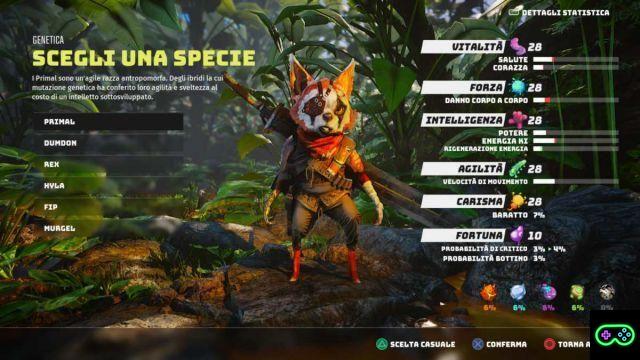
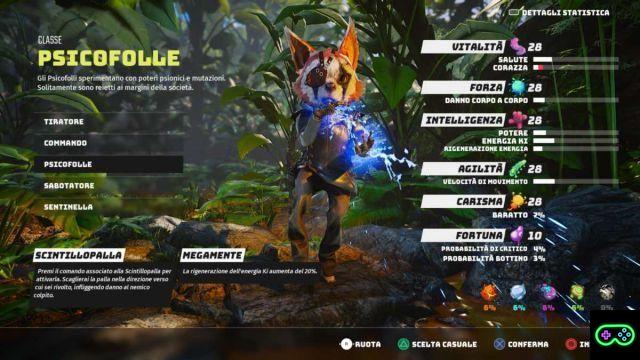
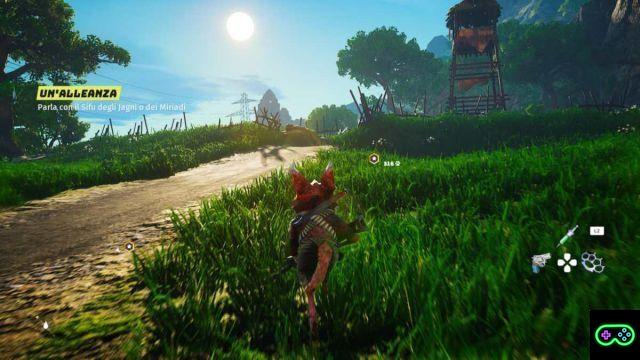
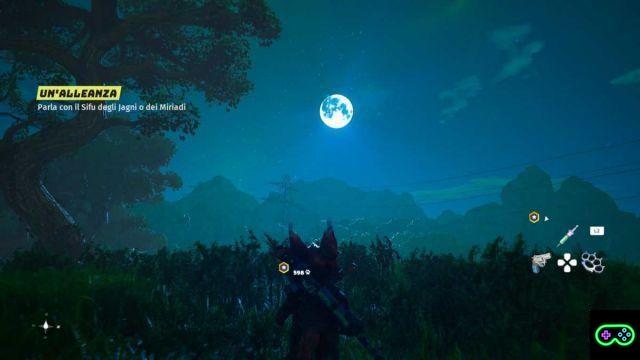
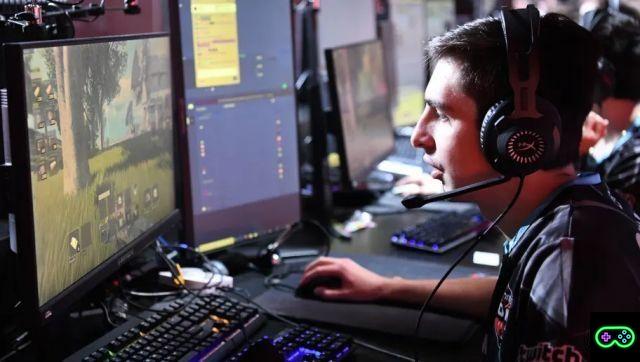
![[The Bear's Lair] God of War: Betrayal and Greek mythology](/images/posts/17432d3b12ecfec44b0b855d20c7520f-0.jpg)
